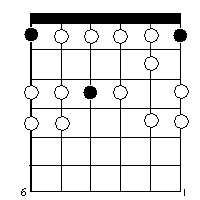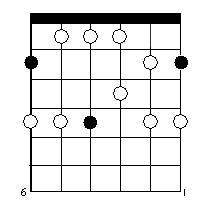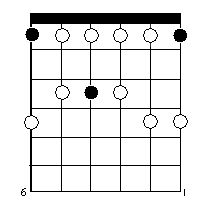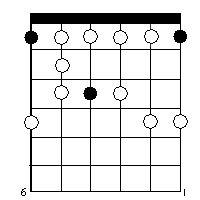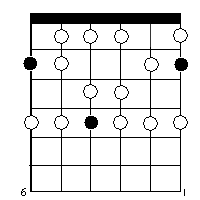
Scale Theory
To be able to play by ear, you will
have to master chord patterns, scales and construction. A scale is a series of
notes played in any order. The order of the notes is governed by the mode. There
are various modes in music. The mode of music also governs various styles of
music, example, Rock, Jazz, Classical, etc. So if you wanted to play a classical
piece on the key of Fmaj., then you would play a particular order of notes
belonging to Fmaj. and like wise if you wanted to play a Jazz piece in the key
of Fmaj., then you would play a different order of the notes belonging to the
key of Fmaj., and so on. More on Modes soon!
There are some basic scales, which are fundamental to all guitar players. To use
your fingers efficiently use one finger for every fret. If you use finger 1 on
fret 1 then use finger 2 on fret 2, finger 3 on fret 3 etc. We will briefly look
at the following scales. The picture shows the 1st string on the right and the
6th string on the left. The black dots are the root note. So if you wanted to
play an A scale, then simply start at A which is the 5th fret on the 6th string
and if you wanted to play a G scale then start on the 3rd fret on the 6th
string. That is what the black dot depicts. Follow the pattern for the rest of
the notes in the scale. Soon you will be able to improvise on the scales below.
For example you can jump from string 1 to string 3, or you can switch the order
of the notes on the same string, as long as you play the allowed notes on the
particular scale. Eventually you will be able to improvise even further by
adding more notes NOT in the scale, to discover really melodious scales.
My favorites are,
The major scale

